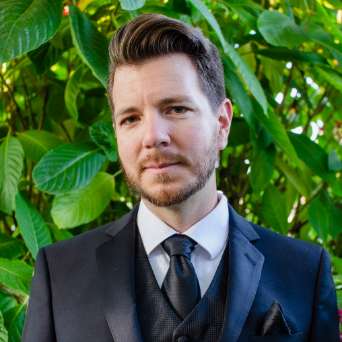Out with the old, in with the new. The administrative changes that San Diego Opera instituted last spring, combined with the community’s invigorated support, backed by a national outcry, saved opera in San Diego. But the adminstration isn’t the only difference. The company modified its season; its belt needed tightening. Faced with the alternative, San Diego’s season looks to be a satisfying offering, but the devil may be in the detail.
San Diego Opera opened its 50th anniversary main stage season, a remarkable achievement in itself, with a production of the piece that opened the company half a century ago: Puccini’s La bohème. Yet this was not the production San Diego was planning on performing prior to things going south a year ago. Despite an attractive, clever set by director Isabella Bywater (a frequent collaborator with Jonathan Miller), it became apparent before too long that this was a small-scale Bohème. The two halves of the set rotated to accommodate the needs of each act, and Bywater’s resourceful staging utilized every inch of them. From Café Momus to the city gate of the third act (a door to the side of the tavern), it all felt cramped. The shenanigans of the Bohemians felt limited by their small quarters and the tableaux of the Latin Quarter didn’t contain much of a bustling holiday crowd.
Still, Bywater deserves credit. It was a fluid piece of staging with the 1930s costumes and palette pleasing to the eye, just not “grand” in the San Diego Opera tradition. Although well rehearsed and cohesive as San Diego Opera performances are wont to be, Saturday’s was often a disappointing vocal showcase.
Tenor Harold Meers and soprano Alyson Cambridge, both in their company debuts, lacked the effervescence that makes the young lovers Rodolfo and Mimì so youthful. Meers was a shy Rodolfo whose tenor was gracefully phrased, yet there was little dynamism in his singing and his high notes tended towards pale colors, marked by a wobbly high C in “Che gelida manina.” He tended to be outmatched by the orchestra and was hardly audible towards the bottom of his register. While Cambridge possesses an exciting voice, she had numerous pitch problems when attempting to rein in her sound for Mimì’s more delicate lines. She was clearly at her best at the beginning of Act III in the more dramatic music, parlaying the power of her voice into a full-bodied and heartbreaking plea for assistance from Marcello.
The rest of the cast fared better, sparked by a beguiling performance from Sara Gartland as Musetta. Her Catherine Zeta Jones in Chicago good looks and assured soprano voice increased the performance’s vocal stock considerably. It is a fine soprano voice, focused and attractive. Her “Quando m’en vo” was capped off by a splendid piano high B. The Bohemians were endearing and sung with deft musicality. Morgan Smith as the ring leader, Marcello, sang with a distinct gravelly baritone. Veteran Malcolm MacKenzie still sounds quite youthful with a glowing sound, and Christian Van Horn made quite an impression with a gleaming bass voice as the philosopher Colline. Scott Sikon, a long-time favorite in San Diego, did double duty as the two old codgers Benoit and Alcindoro.
Karen Keltner, whose marvelous career as resident conductor in San Diego comes to an end this season, led a halting performance, prone to careening through Puccini’s more anticipated moments and otherwise plodding. The playing from the San Diego Symphony members was less than completely graceful.
Still, if ever an opera were immune to some imperfections, it would be Bohème. The searing chords from the horns at the final tragedy are always shattering, and the dramatic cohesiveness of the performance was charming and sincere in spirit. And if the pre-curtain standing ovation for new Board President Carol Lazier and Chief Operating Officer Keith A. Fisher is any indication, things are looking up in San Diego. With the 2015–2016 season already set, San Diego has much to celebrate and, for now, that is enough.




